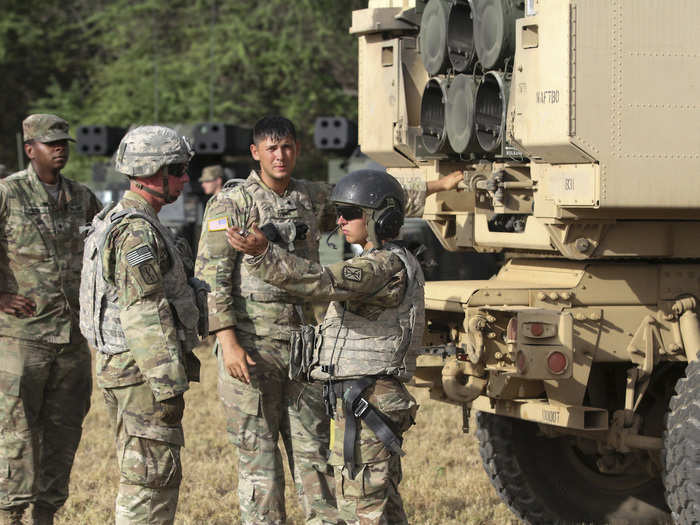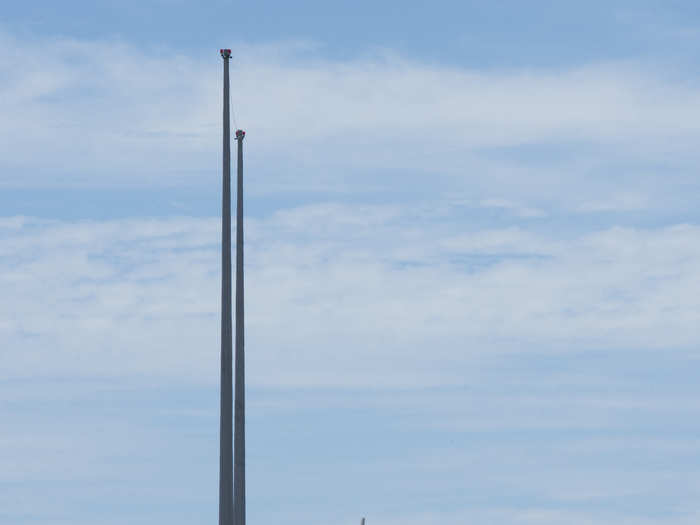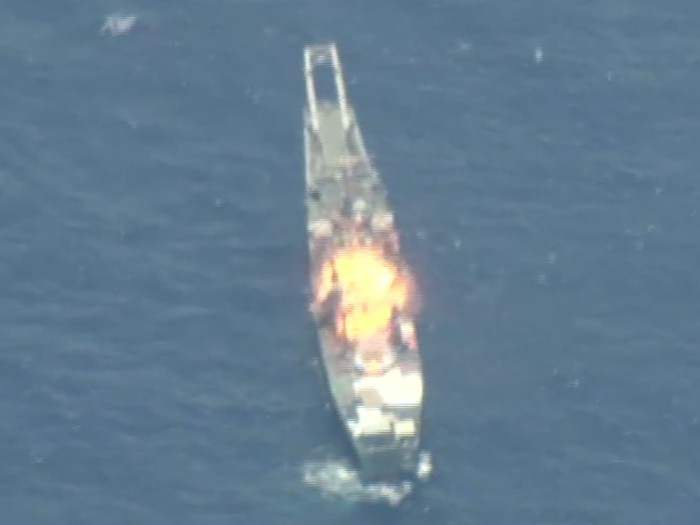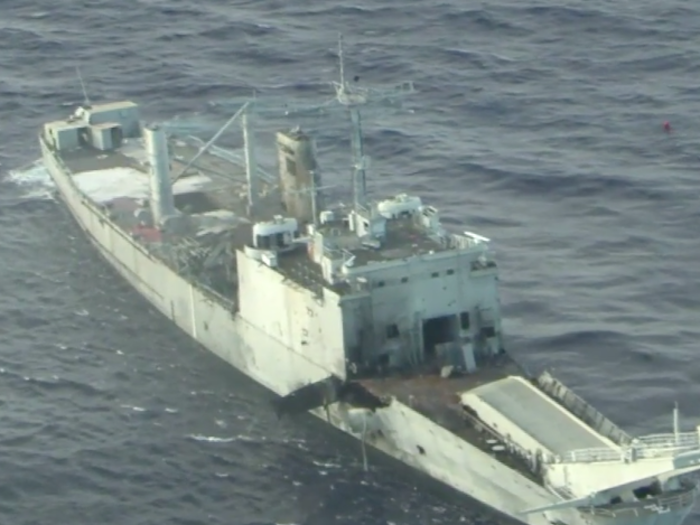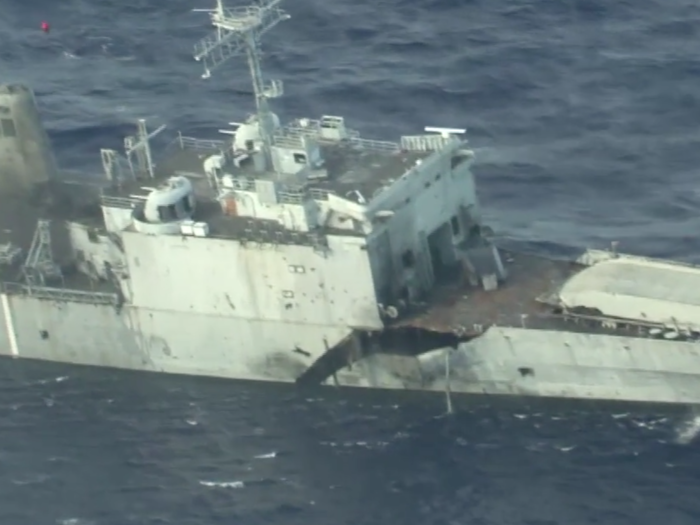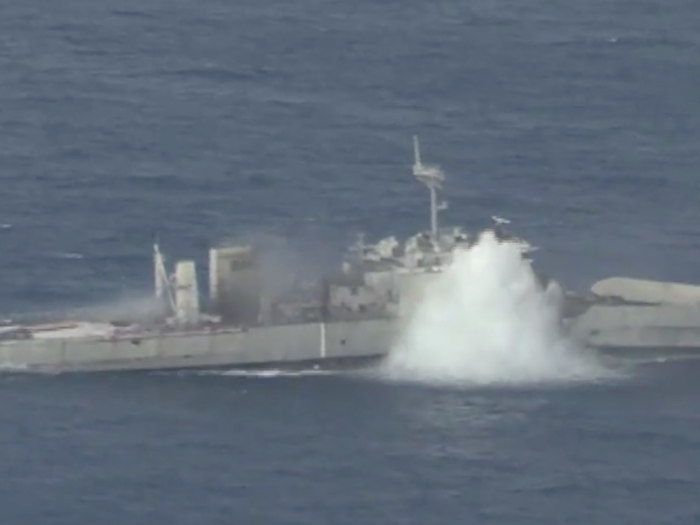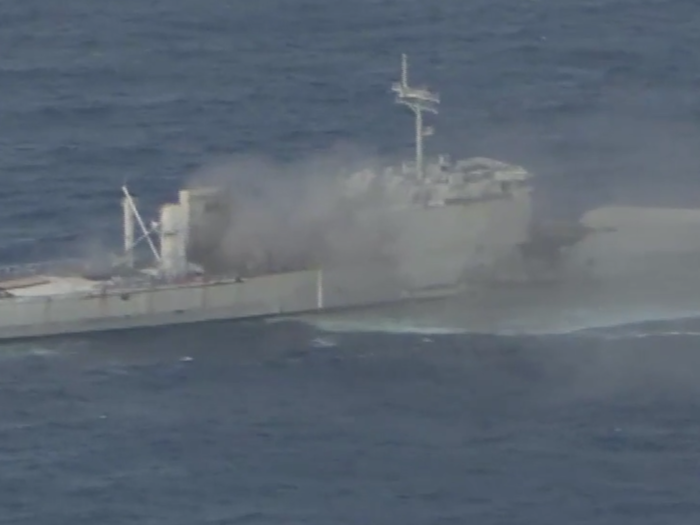"Ex-Racine was not like some of our regular tows, where we are moving an active ship from one place to another," said Capt. Harry Sprague, the Sioux's civil-service master. "With this one, our concern was what would happen once we started to move it; was it going to be seaworthy? Would it take on too much water? Would we be able to deliver it to a spot in the ocean where it may or may not sink when the time came?"
Australian, Japanese, and US personnel took part in the July 12 sink-ex. At Pacific Missile Range Facility Barking Sands in Hawaii, Japanese Ground Self-Defense personnel fired a surface-to-ship missile, and US soldiers fired a Naval Strike Missile and missiles from a High Mobility Artillery Rocket System, both of which were truck-mounted.
Gen. Robert Brown, commander of US Army Pacific, said it was the "first time ever in history" that Japanese missiles under US fire control targeted a ship. "That's pretty unique," Brown told The Honolulu Star-Advertiser.
The US and partner forces have put new emphasis on ground-based missiles as the ocean and littoral areas have become more contested. "Countries like China, Iran, and Russia are challenging our ability to project power ashore, from the sea, through ever-more sophisticated anti-ship missiles," Adm. Harry Harris, then-head of US Pacific Command, said in 2016.
Mobile, ground-based, long-range missiles are seen as another option — alongside Navy and Air Force assets — to target enemy ships when anti-ship missiles make it harder to operate in contested waters. Such coordination reflects the Pentagon's ambitions for a multi-domain approach to battle, drawing on cooperation and information-sharing between militaries and service branches.
Ground-based missiles can be reloaded, and their mobility makes them harder to detect and destroy. Such forces are "like an unsinkable aircraft carrier," Brown told The Star-Advertiser.
During the July 12 sinking exercise, a Japanese P-3 Orion maritime patrol aircraft was on the scene to acquire the target, but poor weather prevented it from doing so. Instead, a Gray Eagle drone, working with a US Army Apache helicopter, tracked down the target.
The Apache relayed target information from the drone to Army personnel on the ground, who passed the details along to the Japanese and US missile crews.
Japanese personnel fired four Type 12 missiles at the Racine, all of which hit the target, the Navy said. The Japanese missiles were also fired alongside missiles from a US High Mobility Artillery Rocket System. The US Army also fired the Naval Strike Missile — likely the first time the service has done so, Col. Christopher Wendland, the head of the multi-domain task force, told The Star-Advertiser.
Sinking exercises "are an important way for us to test our weapons and weapons systems" in the most realistic way possible, said Canadian navy Rear Adm. Bob Auchterlonie, deputy chief of the RIMPAC Combined Task Force. A Royal Australian Air Force P-8A Poseidon maritime patrol aircraft — taking part for the first time — fired a Harpoon anti-missile at the Racine during the exercise.
US Navy fast-attack sub USS Olympia also fired a Harpoon missile, in addition to a Mark 48 torpedo. The potency of torpedoes against a ship means they are typically used last during sinking exercises. The Racine still took an hour to give in, however, slipping beneath the waves into 15,000 feet of water around 8 p.m. on July 12.
The exercise "demonstrated the lethality and adaptability of our joint forces," US Indo-Pacific Command head Adm. Phil Davidson said. "As naval forces drive our enemies into the littorals, army forces can strike them. Conversely, when the army drives our enemies out to sea naval firepower can do the same."


